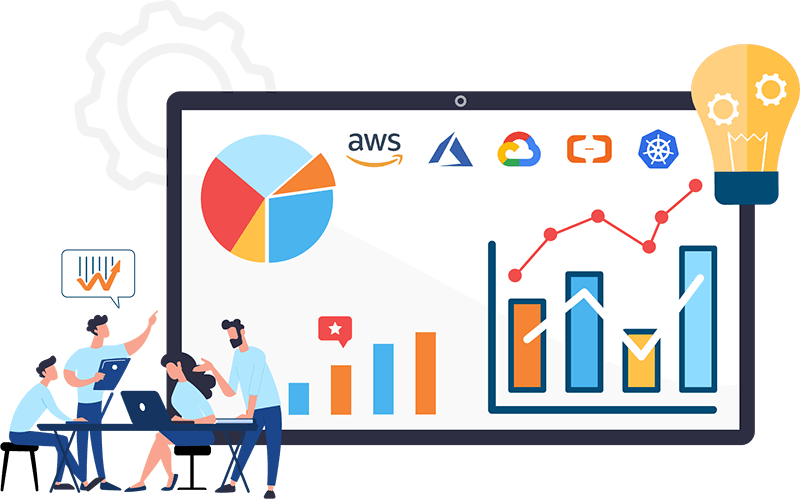As technology in business continues to evolve, IT costs can quickly add up. Companies may be looking for ways to reduce IT costs while maintaining a high customer service level. This article will discuss the potential benefits of lowering IT costs without increasing incidents and escalations. We will explore strategies to reduce IT costs, improve customer service, and increase employee productivity.
Related article: Strategies for effective IT Cost Optimization
What are IT costs and incidents/ escalations?
IT costs are the financial costs associated with a company’s IT infrastructure, including hardware, software, and services required to maintain its IT systems. It also includes the cost of staffing and training and other IT-related expenses.
Incidents and escalations
An incident is an unplanned interruption or degradation of service. It may be caused by hardware or software failure, user error, or an external factor such as natural disasters or malicious attacks. Escalations involve escalating an incident to a higher level of support if the initial response cannot resolve the issue. It may include escalating to a higher-level IT team or a third-party vendor for assistance. Escalations are essential to ensure that incidents are resolved quickly and efficiently.
Before understanding how to reduce IT costs without incidents or escalations, we must understand the typical reasons that affect your IT budget.
Reasons for increasing IT costs
Increasing IT costs can be a result of several factors. As technology advances and organizations become more reliant on IT systems, businesses may need to invest more in their IT infrastructure.
- The cost of new hardware and software can be a significant factor in increasing IT costs. As technology advances, older hardware and software become outdated and must be replaced with the latest and most advanced versions. It requires a significant investment in new hardware and software, which can be costly.
- IT teams will also need to acquire specialized skills and expertise to keep up with the changing technology landscape. As new technologies and software are released, IT teams need to be updated with the latest trends and developments to provide the best services to their customers, which requires investing in training and hiring new staff, which can be costly.
- Maintenance and support costs can also be a factor in increasing IT costs. Organizations need to ensure their IT systems are running smoothly and efficiently and are secure from potential threats, requiring additional resources and expertise.
- Finally, organizations may need to invest in security measures to protect their IT systems and data. As cyber threats become more sophisticated, businesses need to invest in the latest security solutions and tools and train their staff on best security practices, which can also add to IT costs.
Now that we have a list of reasons that increase IT costs, we will list a few strategies to keep the costs down.
Strategies for reducing IT costs

Utilize Open Source software
Open source software is often free or low-cost and can greatly reduce IT costs. Open-source software can usually do the same job as proprietary software, and sometimes can even be more secure.
Move to the Cloud
loud computing allows organizations to access IT resources on demand without purchasing and maintaining their own hardware or software. Cloud computing can make it much easier for a business to scale up its operations and reduce costs associated with hardware and software. Companies can pay only for their services using cloud-based services rather than invest in capital equipment. In addition, cloud-based services can reduce the need for IT professionals to manage and maintain hardware and software.
Automate processes
Automating manual processes can reduce the time spent on IT tasks and eliminate the need to hire additional personnel. For instance:
- Automation of infrastructure management: Automated infrastructure management can help reduce IT costs by automating the deployment and configuration of servers, networks, storage, and other components. Automation can also manage patching, upgrades, and other IT operations tasks.
- Automation of patch management: Automated patch management systems can reduce IT costs by automatically identifying, testing, and deploying security patches and other system updates. And automation can further help patch management by monitoring system performance and detecting software vulnerabilities.
- Automation of Service Desk: Automated service desk systems helps streamline service desk operations by automating everyday IT tasks. Automation can help track service requests, assign staff, and provide automated notifications.
- Automation of application deployment: Automated application deployment can reduce IT costs by automating the deployment of new applications and versions. Automated application deployment can also monitor system performance and detect software vulnerabilities.
- Data analytics and data management: Automated data management systems can reduce IT costs by automating data storage, backup, and recovery. Businesses can use analytics and data-driven insights to improve the efficiency of their operations. By collecting data from their operations, companies can identify areas needing improvement and adjust their processes accordingly. It can help them reduce their IT costs while also improving their operations.
Leverage existing resources
Make sure you are taking advantage of all available resources, including the existing hardware, software, and services that may already be available, as well as those that can be acquired at a discounted rate. Additionally, consolidating services can reduce costs by reducing the need to maintain multiple systems.
Improve asset management
Improving asset management can reduce IT costs by reducing the total cost of ownership of IT assets. It could include tracking IT assets and software licenses and ensuring assets are used efficiently.
Utilize managed IT services
Managed IT services can help reduce costs by providing expertise and support on an as-needed basis. Also, outsourcing specific IT tasks can significantly reduce costs and free up internal resources for more critical tasks.
As incidents can escalate and cause a hike in IT costs, businesses need to reduce incidents and escalations.
Tips for reducing incidents and escalations
Proactive monitoring
Proactive monitoring is a set of procedures and processes used to monitor system performance, predict potential issues, and detect problems before they become incidents and require escalation. It is an integral part of an effective incident and escalation management process. Proactive monitoring helps reduce incidents and escalations by offering greater visibility into the service desk lifecycle. It is typically done by monitoring system performance, identifying potential issues, and taking action to prevent or mitigate them. It can include analyzing system log files, running automated tests, and monitoring changes in system performance. It can also help identify the root causes of incidents and escalations.
By gathering data and analyzing it, organizations can identify trends that indicate issues and take action to address them before they become more serious. It can reduce the time and effort required to resolve issues and the number of incidents and escalations that occur.
Proper documentation
Proper documentation is essential for reducing incidents and escalations. It provides a clear understanding of the processes that must be followed for the successful execution of tasks. Documentation includes written materials, such as policies, procedures, checklists, diagrams, and user manuals. It is essential to be as detailed as possible, including step-by-step instructions and specifying the expected outcomes for each step. It should also include information on handling unexpected results, such as errors, and what steps to take to resolve them. It helps ensure that the process is understood and followed correctly, reducing the number of incidents and escalations. In addition to providing clear instructions, proper documentation also helps to minimize confusion.
Documentation should constantly be updated and reviewed periodically to ensure accuracy. Proper documentation reduced the time it takes to resolve incidents and escalations. Providing clear instructions makes it easier to identify root causes and take the necessary steps to correct them, eliminating disruption to operations and minimizing the time needed to resolve an issue.

Regular training
Regular training can help employees become more familiar with the organization’s policies and procedures and better understand their roles and responsibilities. Training should cover general topics such as customer service and problem-solving and specific topics related to the organization’s operations. The training can include risk management, incident response, and crisis management.
Training should also provide employees with the tools and resources necessary to recognize and address potential issues before they escalate. Regular training can also help employees develop skills and strategies to handle incidents and escalations better when they do occur, such as communication and negotiation skills, understanding the organization’s escalation process, and learning how to de-escalate potentially volatile situations.
Training can help employees become more aware of their emotional reactions and how to best manage their responses in difficult situations. Finally, regular training helps create a workplace culture of safety and trust. When employees understand the organization’s procedures, have the tools and resources to deal with potential issues, and feel supported to take action, they will feel more confident to handle incidents and escalations professionally and effectively.
Undoubtedly, the above tips and the strategies to reduce IT costs will ensure reduced number of incidents that need escalation, and business success.
Related article: How to optimize your ITOPs expenses
Final note
Reducing IT costs without increasing incidents and escalations is possible with the right strategy and implementation. The most effective way to achieve this is to review existing IT operations and processes, identify areas of waste and inefficiency, and then use automation, virtualization, and cloud services to reduce costs while improving the reliability and quality of IT services. Organizations must take a proactive approach to IT cost management to increase customer satisfaction.























